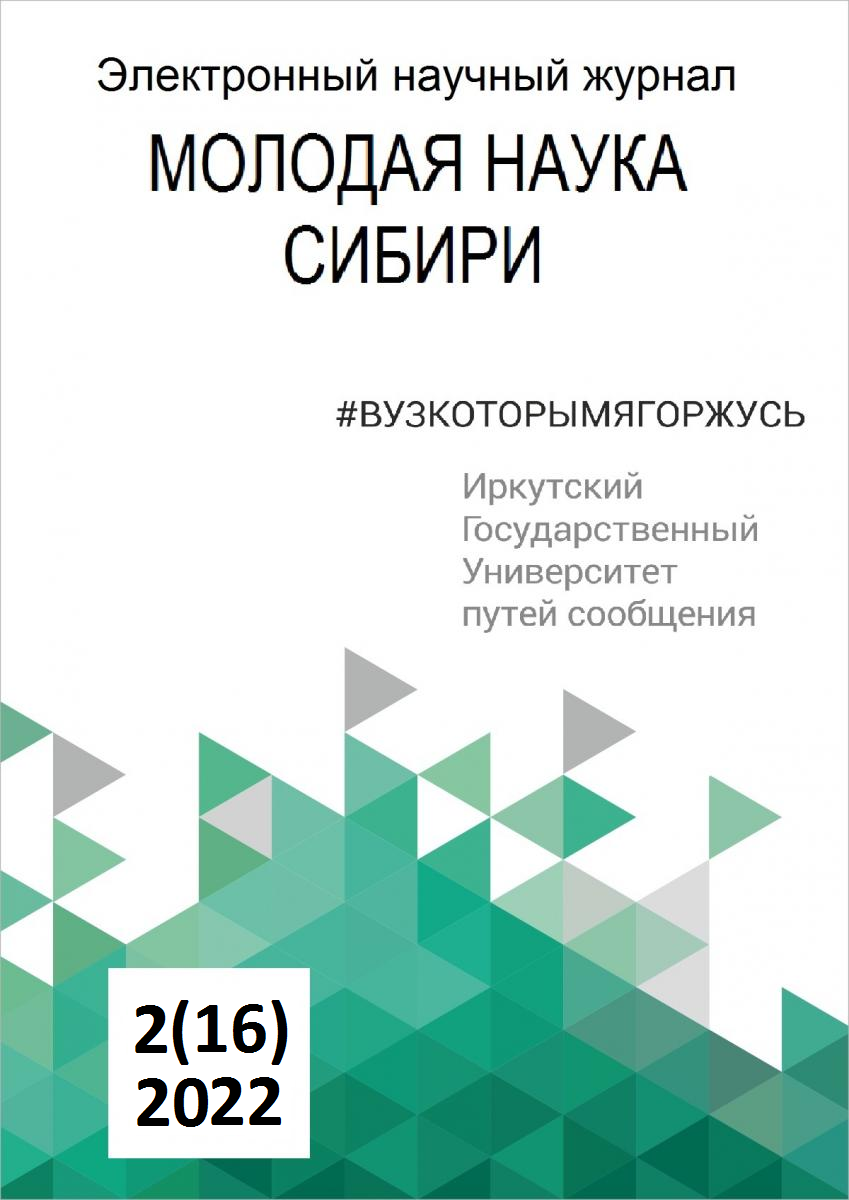ANALYSIS OF METHODS FOR DETERMINING THE STRESS-STRAIN STATE AND FATIGUE STRENGTH OF ROLLING STOCK
Keywords:
experimental and analytical method, finite element method, durability, reliability, stress-strain stateAbstract
The article presents an overview of the state of the issue and an analysis of the problems associated with the durability and reliability of rolling stock structures (PS) based on the study of their stress-strain state (VAT) using known experimental and analytical methods and the finite element method (FEM) under the influence of variable-time working loading of a high intensity level.
Calculation of fatigue strength, when designing parts and components of rolling stock, is included in the list of calculations in their design documentation and refers to the most complex and responsible calculation stage. The problem lies in the fact that after it is carried out, the probability (necessity) of increasing the overall dimensions of the parts increases, which, in turn, have strict requirements for overall dimensions relative to the finished product. Therefore, there are often cases when it is impossible to match the fatigue strength without increasing the dimensions. For this reason, it becomes necessary to select the material or carry out various structural and technological measures to strengthen the weakened areas of the parts so that, as a result, the part meets the fatigue strength criterion.
The presented problem largely depends on the computational method of studying the fatigue strength of parts. Therefore, in the presented work, comparisons are proposed on the accuracy and efficiency of the well-known experimental analytical method and the finite element method, as one of the modern numerical calculation methods used in industry. The main advantage factor of its use is a high level of accuracy in determining the stress-strain state for complex shapes of parts and their loading conditions.
References
Ужик Г.В. Методы испытаний металлов и деталей машин на выносливость/ Г.В. Ужик. – М.: Изд. Академии наук СССР. 1948. – 263 с.
Писаренко Г.С. Сопротивление материалов/ Г.С. Писаренко, В.А. Агарев, А.Л. Квитка, В.Г. Попков, Э.С. Уманский. – Киев: Высш. Шк., 1982. – 325 с.
Оганьян Э.С. Расчеты и испытания на прочность несущих конструкций локомотивов/ Э.С. Оганьян, Г.М. Волохов. – М.: ФГБОУ «Учебно-методический центр по образованию на железнодорожном транспорте, 2013. – 326 с.
Пономарев С.Д. Расчеты на прочность в машиностроении/ С.Д. Пономарев, В.Л. Бидерман, К.К. Лихарев, В.М. Макушин, В.И. Феодосьев. – М.: Машгиз, 1959. – 1078 с.
Одинг, И. А. Допускаемые напряжения в машиностроении и циклическая прочность металлов/ И. А. Одинг. – М.: Машгиз, 1962. – 260 с.
Беляев Н.М. Сопротивление материалов/ Н.М. Беляев. – М.: Наука. 1976. – 608 с.
Екобори Т. Физика и механика разрушения и прочности твердых тел/ Т. Екобори. – М.: Металлургия, 1971. – 264 с.
Серенсен С.В. Несущая способность и расчеты деталей машин на прочность/ С.В. Серенсен, В.П. Когаев, Р.М. Шнейдерович. – М.: Машиностроение, 1975. – 488 с.
Галлагер Р. Метод конечных элементов. Основы/ Р. Галлагер. – М.: Мир, 1984. – 428 с.
Сегерлинд Л. Применение метода конечных элементов/ Л. Сегерлинд. – М.: Мир. 1979. – 392 с.
Шимановский А.О. Применение метода конечных элементов в решении задач прикладной механики/ А.О. Шимановский, А.В. Путято. – Гомель: БелГУТ, 2008. – 61 с.
Зенкевич О. Метод конечных элементов в технике/ О. Зенкевич. – М.: Мир. 1975. – 541 с.
Стренг Г. Теория метода конечных элементов/ Г. Стренг. – М.: Мир. 1977. – 347 с.
Чернявский А.О. Метод конечных элементов. Основы практического применения/ А.О. Чернявский. – М.: Машиностроение, 2003. – 24 с.
Келлер И.Э. Критерии прочности и пластичности/ И.Э. Келлер, Д.С. Петухов. – Пермь: Изд-во Перм. нац. исслед. политехн. ун-та, 2020. – 157 с.


